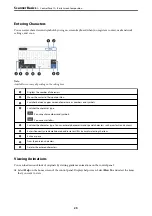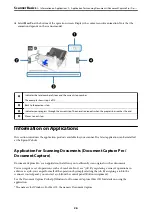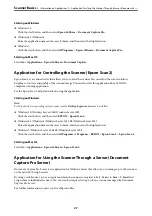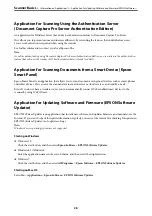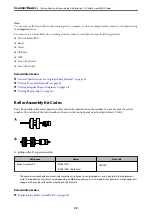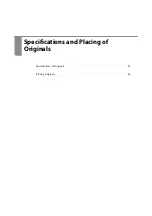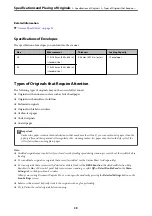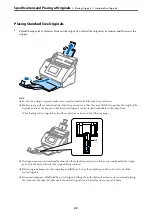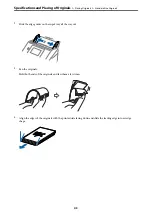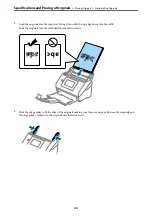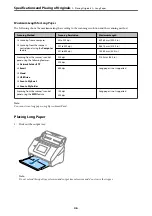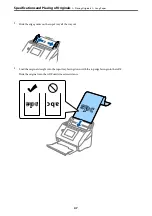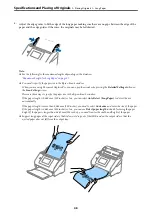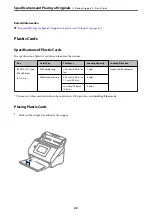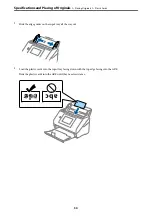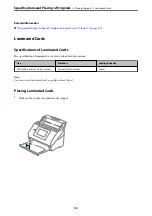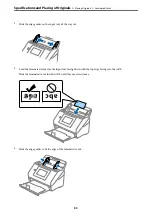
Related Information
&
“Carrier Sheet Codes” on page 31
Specifications of Envelopes
The specification of envelopes you can load into the scanner.
Size
Measurement
Thickness
Loading Capacity
C6
114×162 mm (4.49×6.38 in.)
(standard size)
0.38 mm (0.015 in.) or less
10 envelopes
DL
110×220 mm (4.33×8.66 in.)
(standard size)
Types of Originals that Require Attention
The following types of originals may not be successfully scanned.
❏
Originals with an uneven surface such as letter head paper.
❏
Originals with wrinkles or fold lines
❏
Perforated originals
❏
Original with labels or stickers
❏
Carbon-less paper
❏
Curled originals
❏
Coated paper
c
Important:
Carbon-less paper contains chemical substances that may harm the rollers. If you scan carbon-less paper, clean the
pickup roller and the separation roller regularly. Also, scanning carbon-less paper may shorten the life cycle of the
rollers faster than scanning plain paper.
Note:
❏
Crinkled originals may scan better if you slow down the feeding speed during scanning or smooth out the crinkles before
loading.
❏
To scan delicate originals or originals that are easily crinkled, use the Carrier Sheet (sold separately).
❏
To scan originals that are incorrectly detected as double feeds, set the
DFDS Function
(Double Feed Detection Skip
Function) to
On
on the control panel before you resume scanning, or select
Off
in
Detect Double Feed
on the
Main
Settings
tab in the Epson Scan 2 window.
When you are using Document Capture Pro, you can open the window by pressing the
Detailed Settings
button on the
Scan Settings
screen.
❏
Labels or stickers must be firmly stuck to the originals with no glue protruding.
❏
Try to flatten the curled originals before scanning.
Specifications and Placing of Originals
>
>
Types of Originals that Require
39

